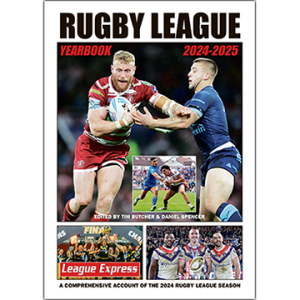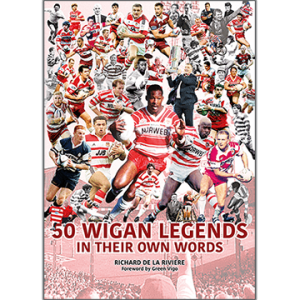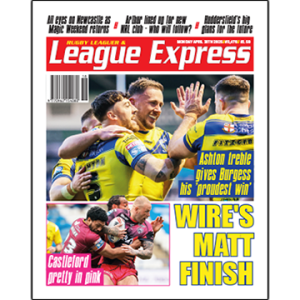
Our time machine travels back to the early 1900s to uncover the fascinating story of a history-making cross-coder.
RUGBY LEAGUE often prides itself on its inclusiveness. While it sometimes fails to live up to the ideal, it’s fair to say that it has offered opportunities to people from backgrounds not normally associated with great wealth or prospective eminence.
Despite rugby league’s progressiveness, it was not the first sport in Britain to include a black player in one of its national teams. Indeed, you may be surprised that this distinction falls to rugby league’s long-time rival, rugby union.
Certainly, it caused a stir. Certainly, there were ructions. But on 17 March 1906 Jimmy Peters, a black man born in Salford, played half-back for England at Inverleith against Scotland. And it opened a Pandora’s box. More of that later…
But, apart perhaps from bemusement that our conservative, once less-inclusive rival code, took such a bold step, what particular interest does Peters’ selection hold for rugby league supporters? Well, it might come as no surprise to learn that ultimately Jimmy was forced to quit rugby union and head to Barrow to earn an honest living playing professional rugby league.
But first let’s learn how he got there. Jimmy was the eldest son of George and Hannah Peters who were living at Queens Street in Salford when he was born. However, most of his early life was spent travelling with a circus. His dad, a performer, died when Jimmy was young – a possibly apocryphal tale says he was mauled by one of the circus lions – and that Jimmy had to become part of the circus troupe in order to pay the family bills. But his days as a bareback rider ended when he was aged only 11 after he broke his arm.
Niamh Field, collections officer at the World Rugby Museum in Twickenham who curated an exhibition on Peters’ life takes up the story. “Unable to perform, it seems he was discovered tied up outside a circus caravan in Dorset by local aristocrat Lady Portman who took pity on him. Her doctor’s daughter arranged a place for him at Fegans Children’s Home in London. The Portmans remained interested in his welfare and sent pocket money during his time there,” she explains.
And it was here his fortunes changed when he discovered rugby union. “The boys at Fegans were allowed free entry to matches at nearby Blackheath,” says Field. “Fegans encouraged them to play rugby too, and Jimmy played half-back.” When he reached the age of 18, he left Fegans for Bristol where his mother, stepfather and siblings now lived and began playing for Dings Crusaders, a club set up by a Christian mission in a deprived suburb. And he was good, so good that Bristol took an interest and he made his debut for them in 1900. Which is when those ructions began to unfold. “There were resignations among the Bristol club committee at that time, possibly connected to Jimmy’s race,” explains Field. “One local newspaper criticised his performance and complained he was keeping a white man out of the team.”
Nonetheless, many of his teammates and other committee members were supportive. His ability was apparent to all and he played 35 times for Bristol, receiving a call-up to the Somerset county side before, in 1902, moving to Plymouth to work in the docks as a carpenter. He would play 10 years for Plymouth RFC alongside fellow half-back Raphael Jago, both becoming mainstays of a successful Devon county team.
But when Jago was picked for England against Wales in 1906, Peters was not. “Peters is sacrificed,” wrote The Western Times. “Colour is the difficulty. Pity for the chances of English success.” England lost. When he was finally selected for the Scotland game there were more complaints. “His selection is by no means popular on racial grounds,” wrote the Yorkshire Post, “though this should not prevail in sport.” This time England won.
He would play four more times for his country. In retrospect it is remarkable that a black man was playing for England at this time. There were fewer than 7,000 black people living in Britain then, even fewer of them would have been exposed to rugby, and the Rugby Football Union itself was very conservative. “It was testament to his exceptional talent and strength of character. He had to overcome hardships, setbacks and intolerance, but he won the support of teammates and fans alike,” adds Field.
But matters came to a head later that year when South Africa toured Britain. “According to one account the tourists refused to take the field against Devon when they learned a black man was playing. It said the South African High Commissioner had to persuade them to play,” says Field. And subsequently when the England team to play South Africa was selected, Peters wasn’t in it, leading to speculation the selectors had wanted to avoid a similar situation. “Although there’s no documentary evidence, it’s certainly possible the selectors wanted to avoid potential disagreement with the tourists,” Field says. “However, contemporary newspaper reports indicate that Jimmy’s form had also dipped.” If it was just a loss of form, however, the timing was notably convenient for the selectors.
From this point on his relationship with the sport waned and after he was injured at work, losing three fingers, his Plymouth club arranged a testimonial match for him. This was enough for the Rugby Football Union to declare him a professional and, to counter the simultaneous threat of some clubs in Devon seeking to join the Northern Union, banned him and 37 other players and officials for life.
Union’s loss was rugby league’s gain. After briefly playing for a new Plymouth Northern Union team, aged 34 Jimmy signed for Barrow, where it is likely his carpentry skills earned him a job in the docks. He made a big impression over the short time he was there. The Barrow News wrote: “Since joining the club Peters has done yeoman service. That he still possesses much of the ability that made him famous, those who have seen him dash through the defences of Barrow’s opponents will readily admit. He is tricky to a degree, and extremely difficult to tackle. He is very popular with his clubmates.”
After an excellent season, he attracted the attention of St Helens for whom he played a handful of games, but the First World War was looming and the 1914-15 season was played under a backdrop of wartime austerity. Jimmy’s occupation was a protected one and it seems likely he returned to Plymouth before season’s end to work again in the docks on behalf of the war effort. Who knows what he might achieved had his St Helens career been allowed to play out? However, he never played rugby again and died in Plymouth in 1954, aged 74.
Phil McGowan, a colleague of Field’s at the World Rugby Museum, is trying to persuade Salford City Council to erect a blue plaque at Jimmy’s birthplace. Plymouth Council is already considering similar recognition. Of course, to rugby league supporters, there’s no irony at all that England rugby union’s first black player ended up playing rugby league. And a plaque in Salford would be a fitting tribute to the first black man who made what would become a well-trodden journey from union to northern England, blazing a trail for others to follow.
First published in Rugby League World magazine, Issue 507 (April 2025)




